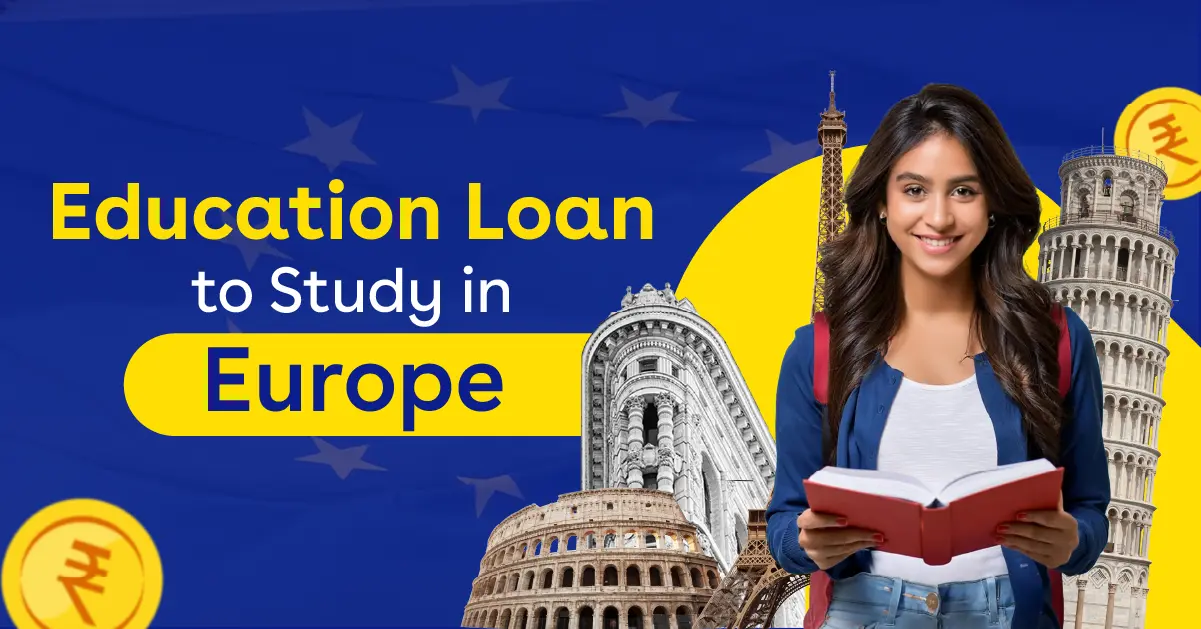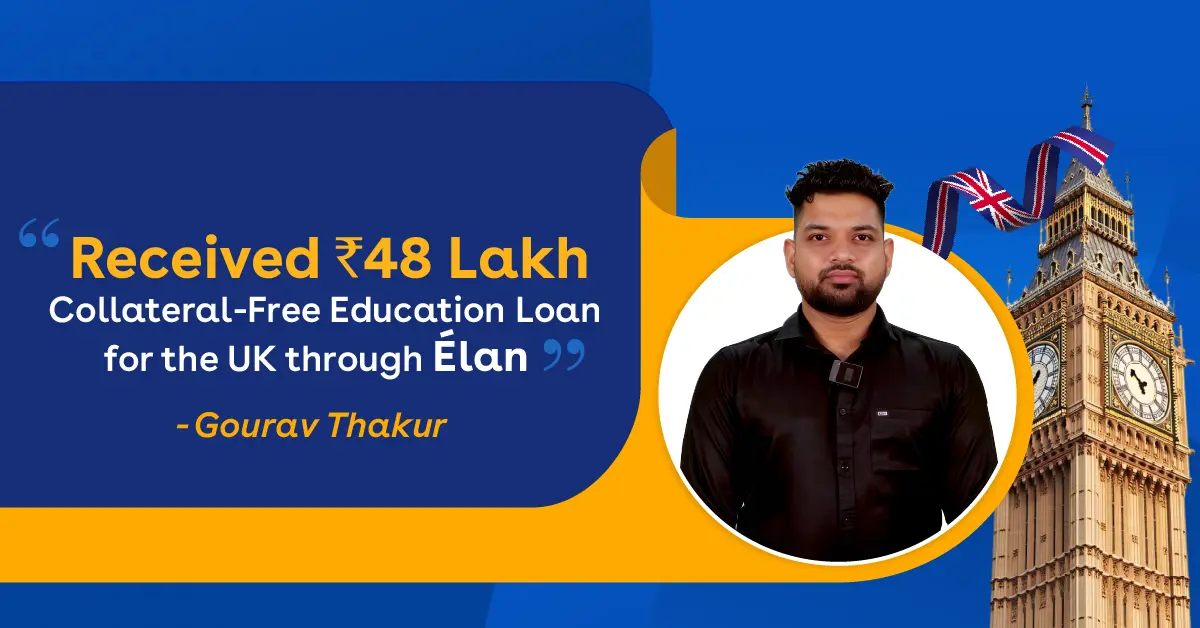Oct 28, 2025
Indian Govt Overseas Education Loan Schemes: Key Features, Interest Rate & more
If you’re planning to study abroad, you already know that one of the biggest hurdles isn’t choosing the right Course or University; it’s arranging the finances. Higher education overseas can be expensive, and for many Indian students, education loans become the most reliable way to turn their global study dreams into reality. While private lenders and NBFCs offer several options, government-backed overseas education loan schemes often stand out because of their student-friendly features, lower interest rates, and wider accessibility.
These schemes are designed to ensure that money doesn’t hold you back from securing admission at Top Universities Worldwide. Over the years, the Indian Government has introduced multiple initiatives to make international education more inclusive, and the support continues to grow. This becomes even more important when we look at recent developments and policy changes in the national budget.
That’s why, before diving into the details of loan schemes, it’s essential to understand how the Indian Budget 2025 & Overseas Education are closely linked.
Indian Budget 2025 & Overseas Education
The Union Budget 2025 has introduced significant changes in the Tax Collected at Source (TCS) regulations, making it easier for Indian students and families to manage overseas education expenses.
These updates are particularly helpful for students relying on education loans, as they bring direct financial relief and simplify the remittance process. Let’s look at the key highlights of the budget that directly impact overseas education.
0% TCS on remittances made through verified overseas education loans.
TCS exemption limit increased from Rs. 7 lakhs to Rs. 10 lakhs under the LRS scheme.
5% TCS to continue for self-funded education above Rs. 10 lakhs.
With these reforms, the government has clearly encouraged students to consider education loans as a smarter and more cost-effective funding option. This naturally leads us to the next point, understanding the benefits of the Indian Budget 2025 for overseas education.
Benefits of Indian Budget 2025 for Overseas Education
The revised TCS rules are not just about tax relief; they also highlight why overseas education loans are a more student-friendly option compared to self-funding. By offering long-term advantages, the new policy makes pursuing higher education abroad more practical for Indian families. Here are the major benefits:
Zero TCS on education loan remittances regardless of the amount.
Tax deductions under Section 80E continue to apply for loan repayments.
Easier visa approvals since loan-based funding reflects financial credibility.
Savings protection, as students and families don’t need to deplete personal reserves.
Structured repayment options, including a moratorium during the study period.
These benefits underline the government’s intent to promote structured financing through education loans while making global education more accessible for Indian students. To understand this better, let’s take a closer look at the next section.
Top Indian Govt Overseas Education Loan Schemes for 2025-26
The Indian government offers a range of overseas education loan schemes, structured to cover multiple aspects of international education. To give you a clearer picture, we’ve outlined the essential components of the top government loan schemes for 2025-26 in the table below, highlighting how each of them supports students in achieving their study abroad goals.
1. Dr. Ambedkar Central Sector Scheme
A loan subsidy scheme by the Department of Social Justice & Empowerment aimed at supporting students from OBC and EBC categories to pursue higher education abroad.
|
Key Features |
Eligibility |
|
- Provides interest subsidy during the moratorium period of the loan. - Covers studies abroad for professional and technical courses. |
- Belong to the OBC or EBC category. - Secured admission in recognized overseas institutions. - Total income limit shall not exceed Rs. 8 LPA |
2. Interest Subsidy Scheme on Education Loan by the Government of Gujarat
A state-level scheme by the Education Department, Government of Gujarat, designed to provide financial relief to students by subsidizing the entire interest component on education loans during the moratorium period.
|
Key Features |
Eligibility |
|
- Covers higher education abroad (as per scheme guidelines). |
- Passed HSC with 60 percentile. - Must have secured admission for higher education overseas. - Additional eligibility criteria as per state education department norms. - Family income limit shall not exceed Rs. 6 LPA |
3. Padho Pardesh Scheme
A Central Government program providing interest subsidies to meritorious minority students from economically weaker sections for pursuing Master’s, M.Phil, or PhD degrees abroad.
|
Key Features |
Eligibility |
|
- Covers a wide range of disciplines, including Arts, Humanities, Sciences, Engineering, Biotechnology, IT, Medical, Agriculture, and more. - Aims to enhance employability and provide global exposure to minority students. - Implemented through designated banks under government guidelines. |
- Annual family income within prescribed limits. - Admission secured in recognized foreign universities for eligible Master’s, M.Phil, or Ph.D. programs. - Family income limit shall not exceed Rs. 6 LPA |
4. Credit Guarantee Fund Scheme for Education Loans
Launched in 2015, this scheme provides a government-backed guarantee for education loans, enabling students to avail loans without collateral or third-party guarantee.
|
Key Features |
Eligibility |
|
- Maximum loan limit of Rs. 7.5 lakh. - Implemented through National Credit Guarantee Trustee Company Ltd. (NCGTC). - Banks handle the necessary paperwork to claim guarantee cover. |
- Loan sanctioned under participating banks as per CGFSEL guidelines. |
5. National Minorities Development & Finance Corporation (NMDFC)
This scheme provides financial support to minority students for pursuing job-oriented technical and professional courses abroad under Credit Line-2, which is specifically designed for overseas education.
|
Key Features |
Interest Rate |
Eligibility |
|
- Covers professional/technical courses with a duration not exceeding five years. - Aims to enhance employability and global exposure for minority students. |
8% p.a. for overseas courses; concessional 3% reduction for women under Credit Line-2. |
- Secured admission in eligible overseas professional/technical courses. - Course duration not exceeding five years. - Annual family income up to Rs. 8 lakh. |
6. National Safai Karamcharis Finance & Development Corporation (NSKFDC)
A scheme by the Ministry of Social Justice & Empowerment providing financial support for higher education, including overseas studies, to Safai Karamchari, Manual Scavengers, and their dependents aged 18 and above.
|
Key Features |
Interest Rate |
Eligibility |
|
- The maximum unit cost eligible is Rs. 20.00 lakhs for study abroad. - Aims to promote access to higher education for marginalized communities. |
4% p.a. for overseas courses |
- Admission secured in recognized institutions abroad. - Loan eligibility and limits as per bank/scheme norms. |
7. National Scheduled Castes Finance & Development Corporation
Implemented by NSFDC under the Ministry of Social Justice and Empowerment, this scheme provides one-time financial assistance to SC students for pursuing full-time professional/technical courses, including studies abroad.
|
Key Features |
Interest Rate |
Eligibility |
|
- Covers tuition, admission fees, books, equipment, examination fees, hostel/mess expenses, insurance premiums, travel/visa expenses, caution money, development fund, and clothing allowance for overseas study. - Applicable for a wide range of professional/technical courses (Engineering, Medical, Pharmacy, Dental, Management, IT, Law, Hotel Management, etc.) abroad. |
|
- Admission secured in recognized full-time professional/technical courses abroad. - One-time assistance; eligibility as per NSFDC guidelines. -Family income should be less than Rs. 3LPA. |
8. National Handicapped Finance Development Corporation
Under the National Handicapped Finance and Development Corporation (NHFDC), this scheme provides financial support to Divyangjan/PwDs for pursuing higher education abroad.
|
Key Features |
Interest Rate |
Eligibility |
|
- Covers tuition fees, living expenses, travel, and other education-related costs. - Aims to empower students with disabilities to pursue professional/technical courses overseas. - Repayment period is up to 7 years. |
|
- Admission secured in recognized professional/technical courses abroad.
|
With a clear understanding of the top Indian government overseas education loan schemes and their benefits, the next step is to know the essential documents you’ll need to apply for and secure these loans seamlessly.
Documents Required for Indian Govt Overseas Education Loan Schemes
When applying for an Indian Government Overseas Education Loan Scheme, having all the necessary documents ready is essential for a smooth and timely sanction process. These documents help verify your identity, income, educational qualifications, course admission, and overall financial eligibility.
While requirements may vary slightly between schemes, the following are the most commonly requested documents across all programs.
Personal Documents
Identity Proof: Aadhaar Card, PAN Card, Passport
Address Proof: Passport, Driving License, Bank Statement, Ration Card, Telephone/Electricity Bill, or Voter ID.
Income Proof: Income certificate issued by a competent authority (e.g., Talati-cum-Mantri, Mamlatdar, TDO).
Caste/Category Certificate: For reserved category applicants (SC/ST/OBC/Minority/Divyangjan as applicable).
Educational Certificates: Marksheet of Class 12 / Diploma / Graduation / Post-graduation as applicable.
Proof of Admission: Admission letter or confirmation from the College/University (including fee structure and payment schedule).
Bank Details: Bank account statement, first page of passbook, or cancelled cheque.
Loan Documents:
Copy of Education Loan Application Form.
Copy of Loan Sanction Letter (signed and stamped by bank).
Copy of Loan Agreement (signed and stamped by bank).
Statement of Education Loan Account from the first withdrawal till the current date (signed and stamped by the bank).
Bank Interest Certificate (signed and stamped by the bank).
Passport-size photograph and signature in digital format.
Visa or Visa Approval Letter.
Power of Attorney
Self-Declaration Certificate stating, ‘No benefit from other scheme’ (as per specific bank/scheme format).
With a clear understanding of the required documents, the next step is to explore the application process for the Indian Government Overseas Education Loan Schemes, ensuring you know how to complete your submission efficiently.
How to Apply for the Indian Govt Overseas Education Loan Schemes?
Applying for a government education loan to study abroad may seem complicated at first, but with the right approach, the process becomes quite smooth. Most schemes can be accessed through the PM-Vidyalakshmi Portal education loan, which serves as a single-window platform for students to apply to multiple banks.
You can also apply directly through the official portals of the scheme. Here’s a step-by-step process.
Step 1: Register & Complete the CELAF
Create an account on the Vidya Lakshmi Portal and fill out the Common Education Loan Application Form (CELAF). This single form is accepted across all government-linked schemes, so ensure that the details are accurate.
Step 2: Search for Government Loan Schemes
After logging in, go to the ‘Search and Apply for Loan Scheme’ section. Use the filters to refine results specifically for study abroad and view only the schemes notified by the Government of India.
Step 3: Review the Scheme Details
Each government scheme listed will have a dedicated information page. Read through the eligibility criteria, expenses covered, repayment terms, and interest subsidy (if applicable) before applying.
Step 4: Apply for the Chosen Scheme
Select the relevant government scheme and submit your application directly through the portal. Attach the required documents to avoid delays in processing.
Step 5: Track Application Status
Once submitted, your application will be forwarded to the designated nodal agencies/banks handling the government scheme. You can check updates like ‘Received,’ ‘Under Review,’ ‘Sanctioned,’ or ‘Disbursed’ on the dashboard.
Step 6: Complete any Additional Formalities
If additional verification or signatures are required, follow the instructions provided on the portal or by the implementing agency.
Step 7: Accept Sanction & Disbursement
If your loan is approved under the scheme, carefully review the sanction terms. Once you accept them, the disbursement process will begin. For overseas education, payments are usually sent directly to the University/Institute.
Being organised and submitting your application on time is just as important as choosing the right Government Education Loan Scheme. These initiatives are a lifeline for many students who dream of studying abroad, but the reality is that they often come with limited seats, strict guidelines, and approval timelines that can stretch longer than expected.
This is where expert guidance can make all the difference. At Élan Overseas Education Loans, our team goes beyond simply informing you about government schemes; we help you explore every possible funding option, whether it’s through Nationalised Banks, Private Banks, or NBFCs. With tailored solutions such as no-collateral or no co-applicant loans, we ensure your financial planning matches your academic goals.
So, don’t let uncertainty slow down your study abroad plans. With Élan by your side, you can navigate government schemes confidently while also unlocking more flexible loan options. Take the next step today and turn your overseas education dream into a reality.
Indian Govt Overseas Education Loan Schemes FAQs
1. Are Indian Government education loans available for all countries?
Yes, most loan schemes cover studies in recognized Universities abroad. However, eligibility may vary depending on the program, country, and approval from the respective bank.
2. What expenses are covered under these loan schemes?
Government-backed education loans generally cover tuition fees, living expenses, travel costs, examination fees, library charges, and even the purchase of books, laptops, or other study-related equipment.
3. Do I need a co-applicant for overseas education loans?
Yes, a co-applicant such as a parent, guardian, or spouse is usually required. Their income and credit history are also assessed during the loan approval process.
4. Is there any subsidy available on overseas education loans?
Certain schemes offer interest subsidies for students from economically weaker sections, minority communities, or reserved categories, as per Government guidelines.
5. How early should I apply for an education loan before my studies begin?
It is recommended to apply at least 3–6 months before the course start date. This ensures that the loan is sanctioned in time to cover tuition fees and visa requirements.

- Share this Article
Articles on Overseas Education Loans

Education Loan for Europe
In recent years, rising tuition fees, stricter admission criteria, and increasingly...Nov 27, 2025

Success Story Gourav Thakur
Every student’s journey toward studying abroad is different; some...Nov 21, 2025

Overseas Education Loan Disbursement Process
Imagine you’ve finally received your education loan approval, that long-awaited...Nov 19, 2025

 Login
Login